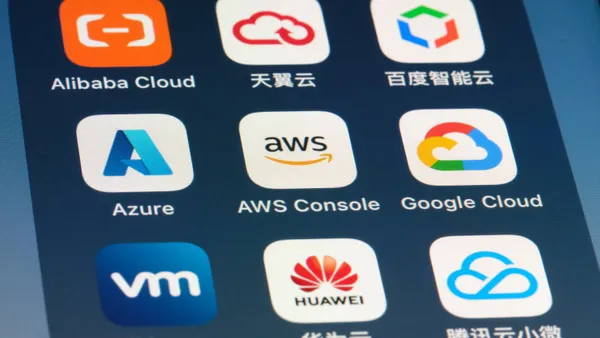When offices start to open back up, CIOs can expect hesitancy, both from a health perspective and one from comfort.
Strategizing a return to the office starts with the individual, said Mike Wright, global CIO of McKinsey & Company, speaking during CIO Office virtual town hall hosted by Zoom Thursday. "I don't think we're going to ask anyone to do something they feel fundamentally uncomfortable with."
Wright and his CIO counterparts expect the abrupt changes the coronavirus made to stick even as the world returns to "normal," said Wright. "What was expected before [the coronavirus], can't be the same now."
Even before the coronavirus, companies were trying to smooth out "big lumps" in their technology, Magnus Falk, CIO advisor in the Global CIO Office at Zoom, while speaking on the call.
The last two months tested organizations' ability to become "an internet era company," calling into question the necessity of standard technologies, he said. There are some things that can be eliminated from an environment, or at the very least, consider alternatives.
As CIOs revisit their technology stack, they should be able to answer these questions, according to Falk:
-
Does an organization actually need its own network?
-
Should IT put security out on the edge so people can connect through native internet?
-
Should devices secure themselves so they "connect across a hostile territory?"
In other words, expect a shift from a capital expenditure to operational expenditure.
The cloud and its licensing directly impacts the "CapEx and depreciation element of budgets are declining,'' said Wright. This ignites a change in financial conversations. Financial departments "often looked to IT to be the buffer in a downturn; just do less and we'll live off the depreciation."
But this is not the recession of 2008 and the coronavirus is usurping that expected burden.
Companies need to look at the overall cost of their business, not just technology, said Annabelle Bexiga, CIO advisor in the Global CIO Office at Zoom, on the call. Where did costs increase?
If costs went up because of the move to remote work, it's likely those costs will stabilize there, if not continue to increase. If that's the case, businesses should ask where they can eliminate other costs, such as corporate footprints in office space or business continuity plans.
If the majority of people are going to stay remote, or if a company adopts a "shift" model to maintain social distancing in the office, "you don't really need to test business continuity because it's always working," said Bexiga.
CIOs are managing costs in three stages: short-term investments, saving from functions currently on hold, and maintaining the strategic agenda, said Wright. Not everything should be redirected in favor of what's urgent right now.
Next steps
Now that everyone in a company is adjusting to a new rhythm of business and productivity, answering those lingering questions about technology might be easier.
Leadership, for example, historically relied on white-shoe services, sidestepping the technologies the rest of the company used, said Falk. But as everyone works from home, "you can't have that white-shoe service, you have to use it themselves and they're actually finding out what it's like… the genie is out of the bottle."
"It took this moment to force people to use the things they bought for everyone else," said Falk.
There were circumstances already remote employees tolerated from their in-office counterparts, such as "hanging onto the telephone" and feeling left out, that have been relieved since going remote. Some of it might be induced by peer pressure from colleagues who were already remote.
"We will unquestionably move to a model that is much more equal in terms of the status between people in office and at home," said Wright. Video is the differentiator because audio calls enable attendees "to multitask without being called out."
Remote and distributed collaboration is an equalizer, even serving as an opportunity for more inclusive workplace cultures. With experience on trading floors, Wright recalls "young men having a beer" as a unifying force.
"That's the way you have to join that group to get along," but now, no one can go out for a beer. "Suddenly that kind of collaboration needs to be established in different ways."















